Introduction
Hailed as the “Queen of Fruits,” mangosteen is a tropical treat appreciated for its tart and sweet taste. Originating in Southeast Asia, this unusual fruit has captured palates worldwide. The potential of mangosteen seeds is a fascinating aspect often disregarded despite its succulent flesh. Though people relish the delicious arils, there is still mystery surrounding the seeds. This essay aims to explore the fascinating query, “Can you eat mangosteen seeds?”
The purple, thick rind of mangosteen (Garcinia mangostana) is highly prized because it contains sections of juicy, white arils. The fruit, prized for its great flavor and balance of sweetness and acidity, is a culinary gem. Mangosteen, high in vitamins, minerals, and antioxidants, is a common ingredient in traditional medicine and is seen as a sign of health across many cultures.
The mangosteen’s seeds reveal another side to the fruit beyond its glossy arils. These seeds, which are frequently discarded, have special qualities and possible health advantages. Mangosteen seeds have historically been used for their alleged therapeutic benefits in traditional medicine, suggesting they may have more uses than just eating. Examining their nutritional value and edibility, this piece seeks to demystify these seeds.
This article aims to expose the truth about eating mangosteen seeds. Can you safely consume them? What kind of nourishment do they provide? By examining health implications, cultural viewpoints, and scientific data, we hope to give readers a thorough understanding of the edibility of mangosteen seeds. This essay seeks to quench your interest in the often-overlooked mangosteen seeds, whether you’re a gourmet looking for new flavors or a health-conscious person investigating nutritious choices.
The Mangosteen Fruit: A Tropical Delight
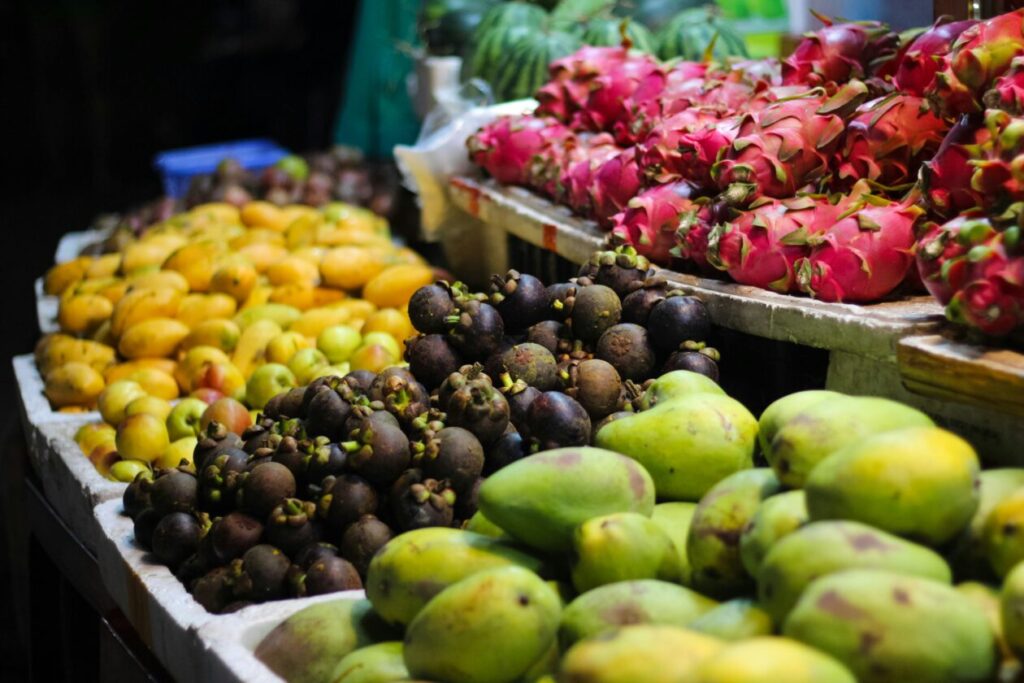
Mangosteen is a highly sought-after delicacy due to its balanced blend of sweetness and acidity in its flavor profile. The fruit has a thick purple peel that contains juicy white arils in segments. Its fibrous yet succulent texture makes for a wonderful eating experience. Mangosteen is a fruit adored in many different cuisines worldwide due to its strong aroma and vivid hue.
Beyond its delicious flavor, mangosteen has a wealth of health advantages. The fruit promotes general health and is rich in vital vitamins, minerals, and potent antioxidants. Mangosteen is especially high in vitamin C, which strengthens the immune system. It also contains xanthones, organic substances with antioxidant and anti-inflammatory properties. Even if the mangosteen seeds are this essay’s main topic, it’s crucial to recognize the nutritional benefits the flesh offers consumers of this delightful tropical fruit.
The benefits of mangosteen go beyond its culinary applications. The fruit has a unique role in traditional medicine across many cultures. According to historical accounts, the mangosteen plant’s many parts—including the seeds—have been used for possible medicinal purposes. This cultural importance adds another level of fascination to our investigation into the edibleness of mangosteen seeds. Gaining insight into the wider context of the traditional uses of mangosteen improves our enjoyment of the fruit and its different parts.
The Hidden Gems: Mangosteen Seeds
Mangosteen seeds have a distinct look and texture but are frequently obscured by the delicious meat. These seeds are usually smooth, lustrous, brown, and tiny, all enclosed in white arils. The seeds’ size varies slightly according to the particular type of mangosteen, and they are encased in a protective coating. Mangosteen’s juicy segments are typically the main attraction, but these seeds are also important for the fruit’s general structure and reproduction.
Mangosteen seeds have been used for purposes other than supporting the fruit’s structure throughout history. In various cultures, traditional medicine has investigated the possible health advantages of mangosteen seeds. Because of its alleged ability to reduce inflammation, extracts from the seeds have been used and are thought to improve general health. While these conventional applications are fascinating, viewing them objectively and considering the lack of substantial scientific evidence to support these assertions is important.
A common misunderstanding regarding mangosteen is that its seeds are edible. The seeds are thought to be inedible because of their bitter flavor, even if the flesh is praised for its wonderful flavor. But it’s important to refute this assumption. Mangosteen seeds are edible, but they must be prepared in a certain way to taste well. Knowing the truth about mangosteen seeds can help expand the culinary applications for this fruit of the tropics, encouraging connoisseurs to investigate and savor every aspect it provides.
Can You Eat Mangosteen Seeds?

There is often interest when people ask if they may consume the seeds of the mangosteen plant. Mangosteen seeds are edible according to science, but there’s a catch. When eaten uncooked, the seeds’ harsh flavor may be less tasty. However, the bitterness can be reduced and more tolerable with the right processing and cooking techniques. Common methods for enhancing the taste and bringing out the nutty flavor of seeds include roasting or boiling them.
Besides its culinary uses, mangosteen seeds have been linked to several health advantages. The seeds’ potential benefits to general health and their anti-inflammatory qualities have been investigated by traditional medicine. A few devotees include mangosteen seed extract in their diets or exercise regimens. It’s crucial to remember that, despite the intriguing nature of these traditional applications, there has yet to be a scientific study on the health advantages of mangosteen seeds. As such, seeking medical advice before including them in your diet is advised.
Mangosteen seeds have several culinary applications and possible health benefits, but certain warnings and things must be remembered. Even after processing, not everyone would enjoy the bitter taste. People who have dietary allergies or sensitivities should also proceed with caution. It is advised to begin with small amounts to determine each person’s tolerance and preferences. Adding mangosteen seeds to your diet can be a savory and distinctive experience. Still, moderation and awareness are essential to guaranteeing a good gastronomic experience and possible health benefits.
Preparing Mangosteen Seeds for Consumption
There are a few crucial measures to take while preparing mangosteen seeds for eating to guarantee a delicious gastronomic experience. First, remove the fruit’s seeds, taking care to avoid consuming the raw, bitter taste of the seeds. After being released, thoroughly wash the seeds to remove any remaining pulp. Roasting or boiling the seeds can improve flavor and lessen bitterness. Simmering them for ten to fifteen minutes softens the skin, and roasting them at a moderate temperature can give them a nutty flavor. Let the seeds cool before adding them to your favorite recipes.
When cooked correctly, mangosteen seeds can give a special touch to many different recipes. Their nutty flavor complements both savory and sweet dishes. Add roasted mangosteen seeds to yogurt, cereal, or salads for a crisp texture. Alternatively, grind the seeds and use them as a spice or blend them into salads and sauces. Due to their adaptability can also be used in desserts, such as baked goods or smoothies. You can use the nutritional advantages of mangosteen seeds in a tasty and innovative way by exploring their imaginative culinary uses.
A harmonious blend of tastes and textures is necessary when including mangosteen seeds in your diet. Try out many recipes to see which one best matches your palate. To test your tolerance for bitter overtones, start with smaller amounts and work up to a larger one as you get used to the flavor. To improve the entire culinary experience, think about mixing mangosteen seeds with other complementary ingredients. Mangosteen seeds add a distinctive and nourishing touch to food that can enhance its flavor, whether added to food or cooked into recipes.
Exploring Alternative Uses of Mangosteen Seeds
Mangosteen seeds are used in skincare and cosmetic routines in addition to being used in food. Compounds in the seeds may be beneficial to the skin. Some people use mangosteen seed oil in their skincare regimens to benefit from these possible benefits. Mangosteen seed oil, which is high in antioxidants and good fats, may help to nourish and moisturize the skin. Before putting any new material on the skin, it is imperative to do a patch test to ensure it is compatible and avoid any negative responses.
Mangosteen seed reuse has the potential to improve the environment. Discovering substitute applications for abandoned seeds might lessen their influence on the environment, as they add to organic waste. Some communities investigate the viability of using mangosteen seeds as a sustainable energy source or turning them into biodegradable products. Examining environmentally friendly substitutes for mangosteen seeds aligns with international initiatives to reduce waste and encourage environmental sustainability.
Mangosteen seeds can be used in creative ways beyond food in communities all over the world. These acts highlight the cultural significance of seeds, from making traditional jewelry to incorporating them into cultural celebrations. Mangosteen seeds have also been used in traditional medicine in many different countries. Examining these various applications demonstrates the mangosteen’s adaptability beyond its edible components and contributes to the cultural diversity associated with the fruit.
Are There Risks to Eating Mangosteen Seeds?
Even though there may be health benefits to mangosteen seeds, it’s important to be aware of any potential allergies or negative responses. Some people could be allergic to specific ingredients in the seeds. Common symptoms of an allergic reaction include redness, swelling, or itching. Before adding mangosteen seeds to your diet, it is best to speak with a healthcare provider, particularly if you have a history of allergies.
To ensure a fun and safe experience, it is crucial to consider safety precautions and any contraindications when using mangosteen seeds. Before ingesting mangosteen seeds, any nurse, pregnant woman, or those with underlying medical issues should consult a healthcare professional. Furthermore, moderation is essential because consuming too much might cause discomfort in the digestive system. Mangosteen seed consumption can be beneficial if moderation is used and individual health conditions are considered.
It’s critical to weigh the advantages and disadvantages of eating mangosteen seeds in a balanced manner when deciding whether to do so. Mangosteen seeds have helpful components, but there are also some hazards, especially for some people. People can make educated judgments about incorporating mangosteen seeds into their diet by stressing moderation, speaking with healthcare providers, and paying attention to their bodies. Maintaining an equilibrium between possible hazards and advantages guarantees a comprehensive comprehension of the topic.
Cultural Perspectives on Mangosteen Seeds
Different locations have different cultural meanings associated with mangosteen seeds, and each has its take on whether or not they are edible. The mangosteen seeds are frequently used in traditional recipes in Southeast Asian countries. They are regarded as a natural fruit component and are prized for their possible health advantages. By investigating these cultural customs, we can gain a deeper knowledge of how mangosteen seeds are accepted and used in multiple culinary traditions.
Mangosteen seeds have been included in traditional recipes for ages, giving various foods a unique taste and texture. While some cultures roast or boil the seeds as snacks, others grind them to paste in sauces or sweets. By exploring these ancient dishes, one can learn about the inventiveness and adaptability with which various civilizations have infused mangosteen seeds into their culinary traditions. In addition to providing culinary delights, these customs demonstrate how creatively cultures have used every component of this tropical fruit.
Knowing the importance of mangosteen seeds in some cuisines reveals cultural tales and customs beyond simple ingestion. Mangosteen seeds have symbolic meanings in certain cultures, such as fertility, health, or fortune. Their inclusion in certain rites or ceremonies is a reflection of the close ties that exist between these tropical fruits and societies. Mangosteen’s wider cultural influence on the fabric of various societies is better understood by delving into the significance of the fruit’s seeds in these cultures.
Frequently Asked Questions (FAQs)
Q1: What parts of mangosteen are edible?
A: The edible portion of mangosteen is the aril, consisting of white flesh with tiny nonedible seeds. The aril is sweet to sour in taste, juicy, and fibrous.
Q2: Can you eat all of the mangosteen?
A: You primarily consume the fleshy, interior part of the mangosteen. The circular, clove-like structure of the flesh is pulled from the tough skin before eating. Mangosteen seeds are soft and edible, though they are so small you may not even notice them.
Q3: When should you not eat mangosteen?
A: Mangosteen is generally safe to eat, but individuals with allergies to similar fruits may need to exercise caution. If you have concerns about allergies or adverse reactions, it’s advisable to consult with a healthcare professional.
Q4: How much mangosteen can I eat in a day?
A: While mangosteen is a healthy fruit, moderation is key. Consuming it as part of a balanced diet is recommended. Excessive consumption of any food, including mangosteen, may lead to digestive discomfort.
Q5: Who should not take mangosteen?
A: Individuals with known allergies to mangosteen or related fruits should avoid its consumption. Pregnant or breastfeeding individuals should also consult their healthcare provider before adding new foods to their diet.
Q6: Why is mangosteen so expensive?
A: The high cost of mangosteen is often attributed to its delicate cultivation process, limited growing regions, and the labor-intensive nature of harvesting.
Q7: Is the red part of mangosteen edible?
A: The red pericarp of mangosteen is not typically consumed. The edible part is the aril, the white flesh inside the fruit.
Q8: Why mangosteen cannot eat with sugar?
A: There’s no specific restriction on consuming mangosteen with sugar. However, some prefer to enjoy its natural sweetness without added sugars for a healthier option.
Q9: What is the yellow thing in mangosteen?
A: The yellow thing inside the mangosteen is the aril, the edible part of the fruit.
Q10: Can you eat overripe mangosteen?
A: Overripe mangosteen may have a fermented taste and altered texture. While it is generally safe, the flavor and quality may be less desirable.
Q11: How do you know if a mangosteen has gone bad?
A: Signs of a bad mangosteen include a foul smell, mold, or visible changes in color and texture. Fresh mangosteens should have a sweet aroma and firm, intact skin.
Q12: What is false mangosteen?
A: False mangosteen refers to fruits from different plant species that may resemble mangosteen but are not of the same genus. They are not typically consumed.
Q13: Is mangosteen the best fruit in the world?
A: The designation of “best fruit” is subjective. While mangosteen is highly regarded for its unique taste and nutritional benefits, individual preferences vary.
Unlocking Mangosteen Secrets
- Can you eat mangosteen seeds in water?
- Answer: While eating mangosteen seeds in water is uncommon, the seeds are generally edible and can be consumed independently or incorporated into various dishes. Soaking them in water may alter their texture but won’t affect their edibility.
- Mangosteen seeds benefits
- Answer: Mangosteen seeds are a source of various nutrients and antioxidants. They contain compounds with potential health benefits, including anti-inflammatory and antioxidant properties. However, it’s crucial to consume them in moderation.
- Accidentally swallowed a mangosteen seed.
- Answer: Accidentally swallowing a mangosteen seed is not a cause for concern. The seeds are small and soft, making them likely to pass through the digestive system without issues. However, if you experience discomfort, consult a healthcare professional.
- Can you eat mangosteen seeds, reddit?
- Answer: Yes, you can eat mangosteen seeds. The Reddit community may share personal experiences and creative ways of incorporating mangosteen seeds into various recipes. Always ensure the information aligns with accurate and safe consumption practices.
- Can you eat mangosteen skin?
- Answer: The mangosteen skin is not typically consumed due to its tough and bitter nature. The edible part is the aril, the white flesh inside the fruit. It’s recommended to focus on enjoying the sweet and juicy aril.
- How to eat mangosteen?
- Answer: To eat mangosteen, carefully cut through the thick rind to avoid damaging the edible aril. Once cut, you can easily open the fruit and enjoy the juicy, sweet-tasting white segments. The seeds are also soft and edible.
- What part of mangosteen is edible?
- Answer: The edible part of mangosteen is the aril, which consists of sweet, juicy, and fibrous white flesh. The seeds are also edible, though they are tiny and soft.
- Can you eat freeze-dried mangosteen seeds?
- Answer: Yes, freeze-dried mangosteen seeds are safe to eat. The freeze-drying process preserves the nutritional content of the seeds, making them a convenient and crunchy snack or a topping for various dishes.
Conclusion
To sum up, several factors must be considered while answering the question, “Can you eat mangosteen seeds?” Mangosteen seeds are edible; however, they are sometimes overshadowed by the delicious flesh. Their powerful texture and bitter flavor provide a distinctive culinary experience. Although the edibility of these seeds has been proven, it is important to remember that cultural customs and regional cuisines greatly influence the consumption of these seeds.
Folks curious about eating mangosteen seeds are recommended to explore this option. Trying them in different cooking recipes can be a fun journey. But, considering the harsh flavor of the seeds, moderation is essential. You can taste the range of tastes that mangosteen offers by adding them to recipes or having them as occasional snacks.
Appreciating mangosteen seeds in the larger context of culture and nutrition and their taste is critical. These seeds have been creatively and resourcefully incorporated into the cuisines of many nations, demonstrating both culinary ingenuity and resourcefulness. Furthermore, even if mangosteen seeds have some nutritional value, any potential health advantages should only be considered in a balanced diet. Realizing the significance of mangosteen seeds as more than just a culinary component can allow one to appreciate the fruit’s cultural and nutritional value.
Reference
Xie, Z., Sintara, M., Chang, T., & Ou, B. (2015). Daily consumption of a mangosteen‐based drink improves in vivo antioxidant and anti‐inflammatory biomarkers in healthy adults: a randomized, double‐blind, placebo‐controlled clinical trial. Food Science and Nutrition, 3(4), 342–348. https://doi.org/10.1002/fsn3.225
Ansley. (2019, March 6). 11 Health Benefits of Mangosteen (And How to Eat It). Healthline; Healthline Media. https://www.healthline.com/nutrition/mangosteen
C. Wongs‐Aree, & Sompoch Noichinda. (2014). Postharvest Physiology and Quality Maintenance of Tropical Fruits. Elsevier EBooks, 275–312. https://doi.org/10.1016/b978-0-12-408137-6.00010-7
Was this helpful?

Joseph Emb, RDN
Founder of StyleVitally.com | Registered Dietitian & Wellness Advocate
What I Cover:
I’m passionate about connecting nutrition science and everyday wellness to help people live healthier, more vibrant lives. I write about evidence-based nutrition, mindful eating, sustainable lifestyles, and holistic well-being at StyleVitally.com.
My Background:
The University of Texas in Austin, where I earned my Dietetics diploma, laid the groundwork for my nutrition and health career. My training and hands-on experience taught me the science and art of using nutrition to enhance health and well-being.
Professional Journey:
I’m an RDN with lots of experience. I’ve helped people seeking tailored nutritional recommendations in clinical settings and community outreach programs. My constant learning and professional development ensure that my recommendations are always based on the latest evidence.
Ethical Commitment:
My practice prioritizes integrity. My content is transparent and objective, following the most significant ethical standards. I can give my audience unbiased advice because I’m not affiliated with food businesses or industry associations. I want to help people make informed health decisions that match their values and ambitions.
Join Me on the Wellness Journey:
Join me on the path to vitality and well-being, whether facing nutritional issues, seeking sustainable lifestyle changes, or simply wanting a better, happier you. We’ll discover how diet, mindfulness, and holistic well-being can maximize your potential.






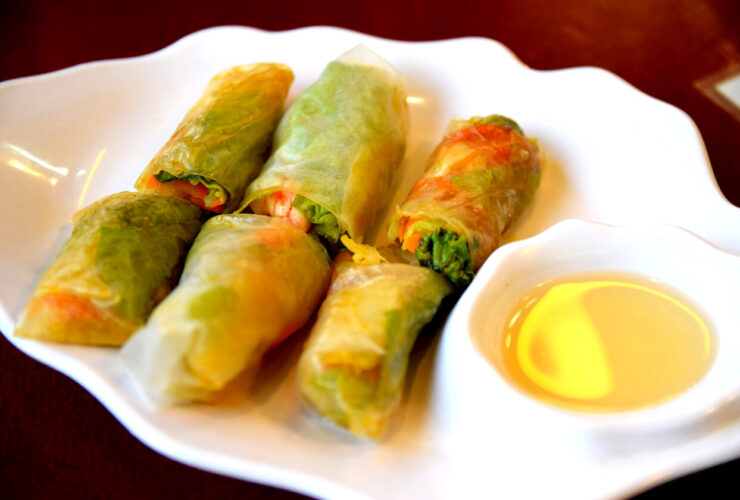
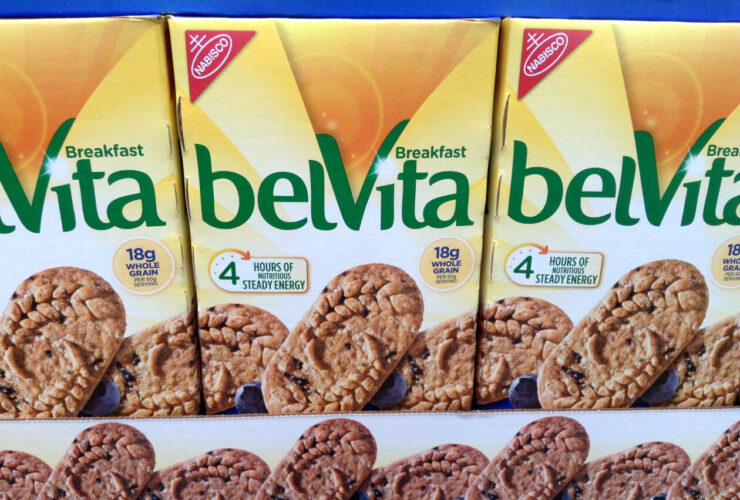
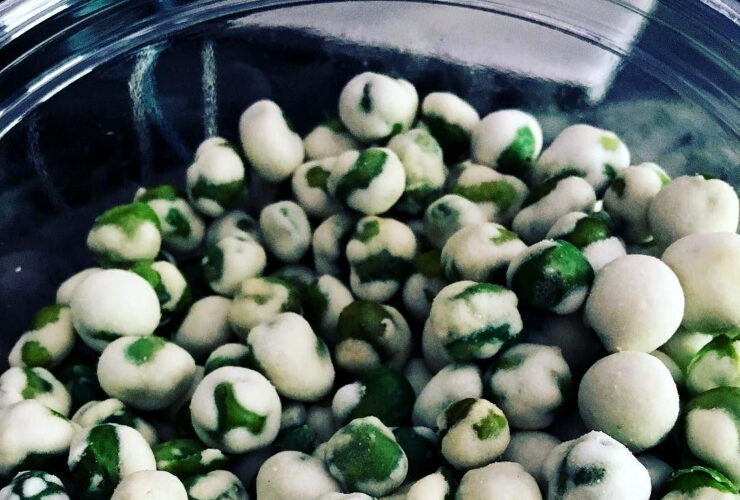
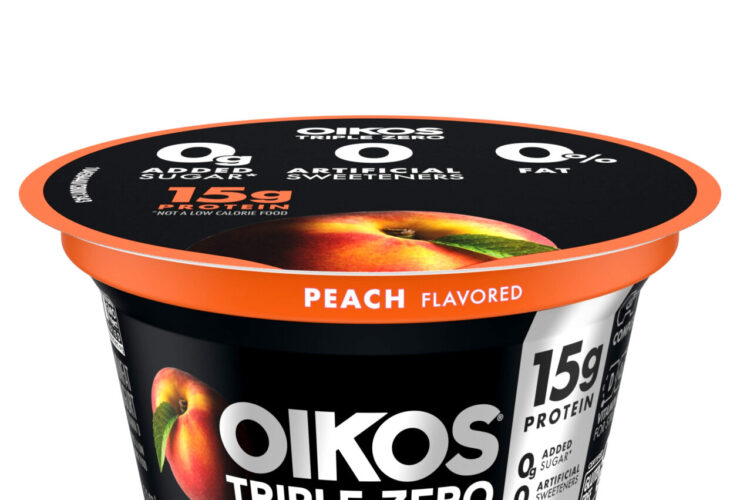
Leave a Reply
View Comments